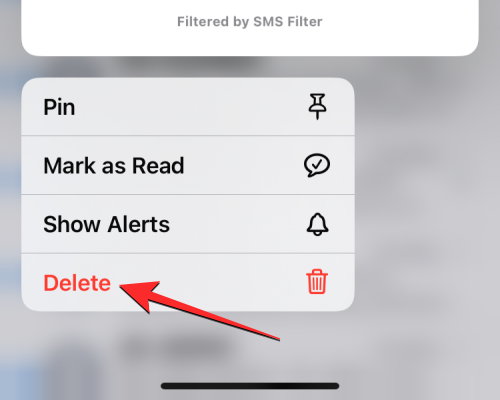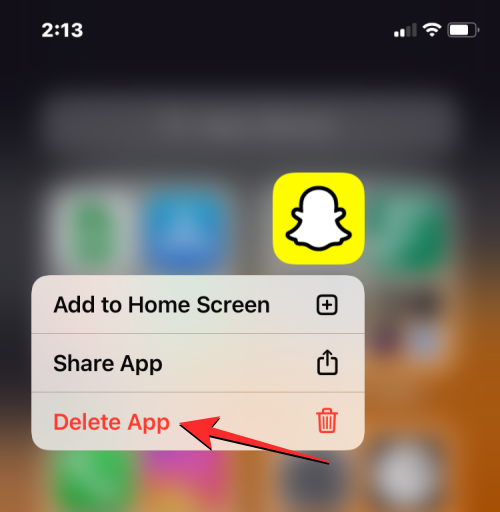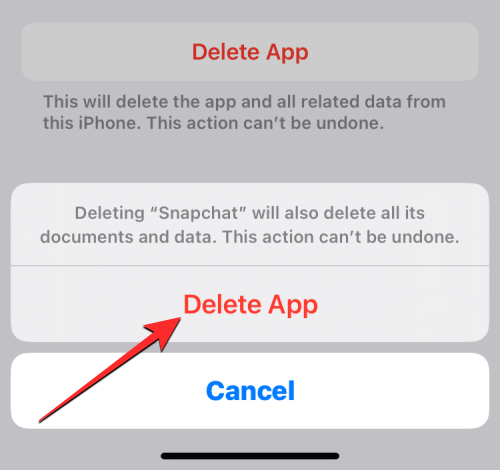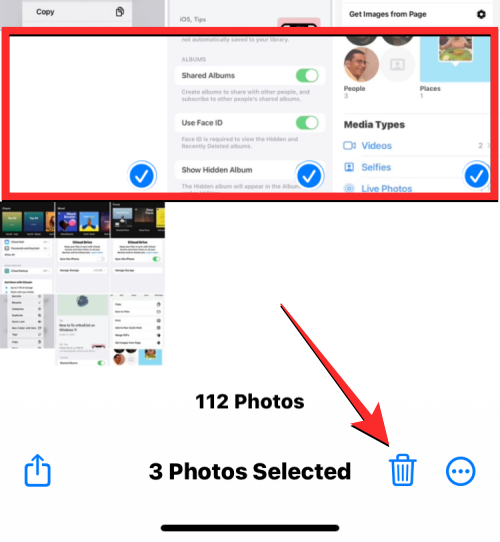Your iPhone’s storage is limited and you will never be able to use its entire storage at any time as both iOS and the apps you’ve installed on your device will take up a significant chunk of space at all times. With usage, the remaining portion of storage may also end up getting filled to the brim. This may include the pictures you captured, files you saved, videos and songs you’ve been streaming online, or the data that was downloaded for the social media apps that you often use.
If you’re running out of space on your iPhone and want to quickly make room to save something else, the following post should help you clear space on your iPhone.
How to clear space on iPhone [15 Methods]
While all iPhones may look and function in similar ways, the way you use your device may differ from the person next to you. What we mean is that the reason why your iPhone is running out of storage may be different from someone else. That’s why we’ve compiled all the following methods which may aid you in saving space on your iPhone’s storage.
Method 1: Check what’s taking up space on your iPhone and delete data accordingly
Before you go ahead and start clearing consumed space on your iPhone, it’s important to know what’s taking up your iPhone’s storage in the first place. To make things easier, Apple provides you with a rundown of everything that’s being stored on your iPhone within iOS settings.
- Go to Settings > General > iPhone Storage.

- On this screen, you’ll see a bar chart that indicates how much storage you have used out of the total storage. This bar will be highlighted with different colors to outline how much storage is being consumed by different file types. Most users will see visible portions of their storage space covered by Apps, Photos, iOS, and System Data.

- Depending on the kind of data you have saved on your iPhone, iOS will provide you with suggestions that can help you gain more space on your device. You can view these suggestions under the “Recommendations” section and follow the on-screen instructions that iOS provides to clear your iPhone storage efficiently.

Related: How to wipe your iPhone
Method 2: Back up your pictures on iCloud or Google Photos and then delete backed-up files
Most modern iPhones come with at least 128 GB of memory on them which wouldn’t be enough if you’re someone who takes a lot of photos and selfies. If your memory fills up frequently within days of clearing them and you don’t plan on reducing the number of photos you capture, then the only way to go forward is to use a cloud storage service where you can save your pictures.
You will get different storage options across various cloud storage services.
iCloud storage
For free, Apple lets you store up to 5 GB of data on iCloud while you can save up to 15 GB of content with a Google account. The number of pictures you can store on either of these storage services is dependent on the amount of other data you’ve saved on your iCloud or Google account.
You can turn on iCloud backup for your pictures by going to Settings > Photos and turning on the iCloud Photos toggle under “iCloud”.

Google Photos backup
If you wish to upload your photos on Google Photos, install the Google Photos app on your iPhone and open it.
- Inside Google Photos, go to your account picture > Turn on backup.

- An advantage of subscribing to Google Photos over iCloud is that you can select the quality of pictures that you upload from Google Photos. The app lets you save pictures in a “Storage Saver” format that reduces the image size so that you can upload more pictures with limited storage.

iCloud doesn’t offer this functionality as all pictures are uploaded in their original quality, thus occupying the same amount of space on the cloud as it would on your iPhone.
Related: How to take scrolling screenshots on iPhone
Method 3: Optimize photos and videos saved on your iPhone to reduce space consumption
If you already have backed up pictures from your iPhone onto iCloud, you can optimize your device’s storage space by removing the original versions of pictures you’ve captured and replacing them with lower-quality images that are of reduced size. This can help clear up a significant portion of your storage, thus saving you the effort to try clearing up other apps or storage.
To optimize your photos and videos on the iPhone, go to Settings > Photos and select Optimize iPhone Storage under “iCloud Photos”.

When you use this option, all pictures you’ve uploaded to iCloud will be replaced by their low-quality duplicates which don’t consume much space on your iPhone.
Related: How to use iPhone 14 Pro camera like a pro!
Method 4: Delete pictures you’ve already backed up
If you’ve already backed up your pictures to iCloud or Google Photos, there’s no reason to keep storing them on your iPhone. When your pictures get uploaded to iCloud, you can use method 3 from above to delete original pictures from your iPhone automatically; the pictures that show up on your iPhone will be of reduced quality, so you don’t need to worry about deleting them.
If you opted to back up your pictures on Google Photos, you will have to delete them from your iPhone manually.
- Open the Photos app on your iPhone. Inside Photos, tap on Select at the top right corner and start selecting the pictures you’ve already backed up.

- Once you select the pictures you want to delete, tap on the trash icon at the bottom right corner.

- You will be asked to confirm this action in a prompt at the bottom. Here, tap on Delete Photos to confirm.

- The selected items will now be sent to the Recently Deleted section inside the Photos app and will remain there for up to 30 days. If you want to delete these pictures permanently, go to Albums > Recently Deleted from inside the Photos app.

- Once here, select these pictures again using the Select option and then tap on Delete at the bottom left corner to remove them from your iPhone entirely.

Method 5: Allow iMessage to delete older messages
If you’re someone who receives and sends a ton of texts over iMessage that may include a bunch of media files in them, you should consider not keeping messages that are older and insignificant to your conversations at present. To clear space, you can either individually delete messages or choose to let iOS remove them automatically.
- Open the Messages app, tap and hold on a conversation you want to remove, and select Delete. In the prompt that appears next, tap on Delete to confirm.

- If you want iOS to automatically delete older texts from the Messages app, go to Settings > Messages > Keep Messages.

- Here, select either 30 Days or 1 Year depending on how long you wish to keep your old messages.

After you select the preferred option, the Messages app will delete any conversation that’s older than the selected period.
Method 6: Remove downloaded content from streaming apps
Like many of us, you may be used to streaming or downloading content from apps on your iPhone. Over time, your iPhone may fill up with songs, videos, movies, and TV shows that you may have downloaded from Apple Music, Spotify, YouTube, Netflix, Amazon Prime Video, YouTube Music, and other apps. To save space on your device, you will have to delete the content you downloaded earlier on all of the apps you regularly watch or listen to.
To delete downloaded content on streaming apps, you will have to open a particular app and head over to its downloaded content section. You can then locate the audio or video that’s stored on your iPhone and delete it from there using the in-app options. This process will differ from app to app; so you will need to figure out where the downloaded section is on your own depending on the app you often consume content from.
To give you a demonstration, let’s try deleting something we downloaded from the Apple TV app.
- To remove downloaded content from Apple TV, open the Apple TV app and go to Library > Downloaded.

- When you see the content you previously downloaded on this screen, tap on Edit at the top right corner.

- Now select the content you wish to remove and then tap on Delete at the top right corner. You can confirm your action in the prompt that appears and then the selected items will be removed from your iPhone’s storage.

The process should be similar to third-party apps like Spotify as well.
- To clear downloaded content from this app, open Spotify and go to Your Library > Downloaded.

- From this screen, select the content you wish to remove, tap on the 3-dots icon inside the playlist or album screen, and then select Remove download from this device.

- In the prompt that appears on the screen, tap on Remove to confirm your action.

You can repeat this for other apps you watch videos or listen to music from but the steps may vary slightly for each of those apps.
Method 7: Offload apps you don’t frequently use
On your iPhone, you may have installed apps a while ago that you no longer use or open once in a while. If you have data or files associated with these apps, removing the app will delete all the data that was stored within that app. To avoid losing this data and still clear some space on your iPhone, an easier way to approach this is to offload such apps. When you offload apps from your iPhone, iOS will clear the space occupied by the app without deleting the data inside them.
- To offload apps from your iPhone, open the Settings app on iOS and go to General > iPhone Storage.

- From here, select the app you want to offload from your device from the list of apps.

- On the next screen, tap on Offload App to remove the app from iOS without deleting its data.

- To confirm your action, select Offload App from the prompt that appears at the bottom.

- You can also configure iOS to offload apps from your iPhone automatically. To do that, go to Settings > App Store and turn on the Offload Unused Apps toggle at the bottom.

When you enable this option, iOS will choose apps that you haven’t used in a while and offload them from your iPhone to clear storage.
Method 8: Uninstall unwanted or unused apps
The above method can help you clear up space from your iPhone by removing apps you rarely use. If you no longer find an app useful, you can delete it from iOS instead to gain more space and delete every data the apps have created or stored on your iPhone.
- You can delete any app from your iPhone by long-pressing on its app icon and selecting Delete App from the overflow menu that appears.

- However, you can find which app from your iPhone takes the most space and delete them accordingly within the Settings app.

- Inside Settings, go to General > iPhone Storage and you’ll be able to see all the apps you have installed on your iPhone arranged in descending order of space consumed. Choosing an app to delete from the top half of this list will make more room on your iPhone than deleting an app that’s listed below.

- Once you’ve located the apps you wish to remove, select one of them and tap on Delete App.

- You will need to confirm this action by tapping on Delete App again in the prompt that shows up at the bottom.

Method 9: Delete Website data and cache
Over time, your iPhone may accumulate data from websites you have visited in the past and this data may contribute to a significant space on your device. If you’re running low on storage or your browsing experience is sluggish, you can remove Safari’s website data to gain some storage on your iPhone.
- To delete website data on Safari, go to Settings > Safari and tap on Clear History and Website Data.

- iOS will now prompt you to confirm this action. In this prompt, select Clear History and Data to proceed.

The steps above will only help clear website data from Safari. If you use any other web browser on your iPhone, you will need to clear data from them individually from within the app’s settings. For instance, if you use Firefox to browse the internet, you can delete its website data by following the steps below.
- Open the Firefox app and go to the hamburger menu (3-lines icon) > Settings > Data Management > Web Site Data.

- From here, tap on Clear All Web Site Data to remove Firefox’s website data from your iPhone.

This may differ slightly depending on the browser app you wish to delete website data from.
Method 10: Use websites instead of apps wherever possible
While apps may be more convenient to use regularly, you can save space on your iPhone by using their websites instead of the apps. Most apps like the ones you use for social media including Facebook and Twitter offer the same kind of content and interface as their website versions. If switching to their respective websites doesn’t hamper your experience in any way, you can clear a lot of space on your iPhone by simply deleting the app whose website alternative is available.
You can also use websites for apps like Spotify, Uber, Pinterest, Telegram, Trivago, Tinder, and Twitter Lite. Moreover, you can create app icons for individual websites you want to visit from Safari and add them directly on your Home Screen to quickly access at any time. To create a home screen shortcut, open the website on Safari, tap on the Share icon, and select Add to Home Screen.

Using websites instead of apps also helps remove temporary data from them much easier as you can delete the browser’s website data instead of removing the data from the concerned app over and over again.

Method 11: Move documents and files from iPhone to other devices, iCloud, or Google Drive
Your Apple or Google accounts’ cloud storage isn’t just available to store your photos and videos but you can also save any file or document on them by uploading it from your iPhone. If you wish to upload your files natively from your iPhone, you should be able to do it by enabling iCloud Drive on your device. To use iCloud Drive, open the Settings app, go to your Apple ID card > iCloud > iCloud Drive, and turn on the Sync this iPhone toggle.

When you enable this option, all your files from the iPhone will automatically get transferred to iCloud and you can access them across any of your Apple devices including another iPhone, iPad, Mac, or on the web. Files that you store on iCloud can also be easily shared with friends and family via links or email and you can manage who can view or edit them from your iPhone easily.
If you don’t prefer this method, you can also transfer files that you want to move away from your iPhone onto Google Drive. For this, you can install the Google Drive app on your iPhone and sign in to your Google account.
- To share a file, picture, or document, open the Files app or any app from where you can share items and tap on the Share icon.

- In the Share Sheet that appears, select Drive.

- You can then select a location inside Google Drive and tap on Upload to store it on your Google account.

Besides cloud storage options, you can transfer stored content from your iPhone to a Mac or Windows computer. While a connection between an iPhone and a Mac can be established natively on macOS, you will require the iTunes for Windows application if you own a Windows computer instead. You can then move files from the iPhone to your computer by following the guides in the lists linked below:
▶︎ How to Airdrop Between Mac and iPhone
▶︎ How to Download Photos From iPhone to Mac
▶︎ 10 Ways to Pair your iPhone With Macbook
Method 12: Capture pictures and videos on Snapchat
Some of you may already use Snapchat on iOS; even if you don’t prefer sharing your pictures on the platform, there’s one reason you may want to use Snapchat. When you’re low on memory and forget to clear your iPhone’s storage before you head out for a journey, you can capture pictures using Snapchat’s camera instead of the iOS Camera app. This way, the pictures you capture are stored in your Snapchat account’s Memories section which will only be visible to you.
When you save memories on the app, Snapchat will store your captures on its cloud servers; this way the picture you click won’t take up space on your iPhone. You can access them at a later time and download them on your iPhone with ease when you have sufficient storage on your iPhone.
- To capture pictures on Snapchat and save them on its cloud, open the Snapchat app on your iPhone and tap on the Shutter button when you have something to click.

- When a picture is captured, tap on Save at the bottom left corner.

- You will see a “Saved to Memories” alert appear at the bottom and the Save button will now show up as “Saved”. You can then tap on the x icon at the top left corner to capture more pictures and save them using the Save option.

- When you want to access your saved snaps and save them onto your iPhone, tap on the Snaps icon on the left side of the Shutter button.

- In the Memories screen that appears, tap the My Eyes Only tab at the top right corner. You will be asked to enter your Snapchat passcode on the screen.

- After you enter the passcode, you will see the pictures you saved as Memories on Snapchat. To save these pictures on your iPhone, long-press on any picture and start selecting the ones you want to download. Once you’ve selected your pictures, tap on Export at the bottom.

- In the options that appear, tap on Download.

The selected pictures will now be visible inside your Camera Roll on the Photos app on your iPhone.
Method 13: Disable My Photo Stream
Apple offers an easy way to view your recent pictures (from the last 30 days) from your iPhone on any other Apple device that’s signed into the same Apple ID using the My Photo Stream option. While this a convenient option for viewing the same pictures on an iPad or a Mac, keeping your pictures visible on all devices will take up your iPhone’s memory, even if the pictures you captured were from other devices.
If you don’t wish to see pictures from other devices on your iPhone, you can disable My Photo Stream by going to Settings > Photos and turning off the My Photo Stream toggle.

Method 14: Delete screenshots from your iPhone
We all capture screenshots on our phones when we find something interesting or funny online. Over time, the sheer amount of screenshots saved on your iPhone can take up a chunk of your storage. The Photos app on your iPhone gives you an easy way to clear them by displaying screenshots in a separate section from where you can delete them.
To remove screenshots captured on your iPhone, open the Photos app and go to Albums > Media Types > Screenshots.

On the next screen, you will see all the screenshots you have captured in the past and you can delete them by tapping on Select and then choosing the trash icon after making your selection to delete them.

Method 15: Opt for iCloud+ or Google One subscriptions for additional storage
You can use method 2 from above to store your pictures and videos on iCloud or Google Photos. Since both of these platforms come with limited storage (5GB and 15GB respectively), you will need additional storage space on them to continue storing more items in the future. Fortunately, both iCloud and Google Photos can be bundled with their own subscription services – iCloud+ and Google One which allow users to expand their cloud storage space so that they can save more content on the cloud and less on the phone.
For more storage on iCloud, you can subscribe to Apple’s iCloud+ premium cloud service that expands your cloud storage to 50 GB, 200 GB, or 2 TB for monthly prices of $ 0.99, $ 2.99, or $ 9.99 respectively. There are no plans with annual subscriptions available with iCloud+.
If iCloud+ doesn’t seem appealing, you can opt for Google’s dedicated cloud storage service – Google One. With this subscription, you can upload your pictures directly from the Google Photos app and they will then be stored on Google One. You can upgrade your cloud storage from the 15 GB quota to up to 100 GB, 200 GB, or 2 TB for monthly prices of $ 1.99, $ 2.99, or $ 9.99. You can opt for the same plans annually for $ 19.99, $ 29.99, and $ 99.99 respectively.
By subscribing to these cloud storage options, you can not only back up your pictures and videos but also save files and documents from your iPhone to clear up more space on it.
How often should you clean up your iPhone storage?
So you were able to gain space on your iPhone for now using the methods listed above. However, this isn’t a one-time process as your iPhone will soon be filled up with more and more data as you use it daily. You thus need to clear your iPhone’s storage from time to time if you’re on limited storage.
How often you need to clear up this storage is dependent on your phone’s usage and the amount of storage that’s available on it. If you own an iPhone that has 512GB or 1TB of storage capacity, then it would take a while for your device to get filled up with pictures and files. If you don’t often click pictures or store files on your phone, you may never need to clear its space. If you’re on a limited budget and you bought the 128GB or 256GB iPhone and you take pictures often, then you may need to clear its space every few months or weeks, in the worst case.
That’s all you need to know about clearing space on an iPhone.
RELATED













Discussion